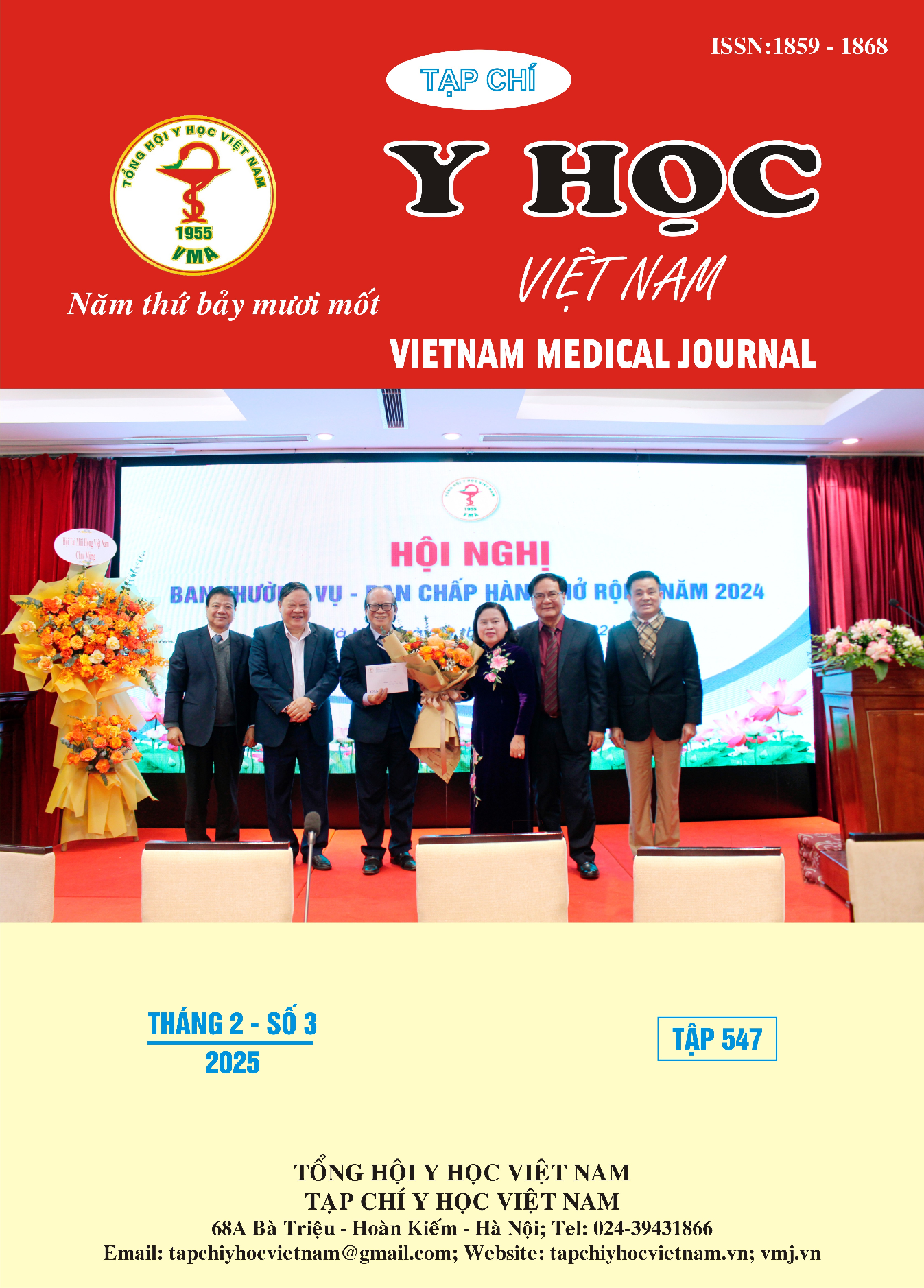EPIDEMIOLOGICAL, CLINICAL CHARACTERISTICS, AND TREATMENT OUTCOMES IN PATIENTS WITH CANDIDEMIA IN THE INTENSIVE CARE UNIT, NATIONAL HOSPITAL FOR TROPICAL DISEASES
Main Article Content
Abstract
Objectives: This study aimed to analyze the clinical features of candidemia, treatment outcomes, and factors influencing these outcomes. Subjects and Methods: A retrospective study of 32 patients diagnosed with candidemia in the intensive care unit at the National Hospital for Tropical Diseases from January 2023 to April 2024, collecting clinical and laboratory findings, treatment outcomes, and assessing factors related to treatment outcomes. Result: The incidence of candidemia in the Intensive Care Unit (ICU) was 1.77%. The majority of patients had at least one underlying condition, with cirrhosis being the most prevalent, affecting 71.9% of patients, followed by hypertension (50%) and diabetes mellitus (46.9%). The most isolated Candida species were C. albicans (46.9%), followed by C. tropicalis and C. parapsilosis, which accounted for 28.1% and 18.1%, respectively. The fluconazole resistance rates for C. tropicalis and C. parapsilosis were 40% and 33.3%, respectively. The mortality rate of candidemia patients was 56.3%, associated with factors such as cirrhosis, mechanical ventilation, thrombocytopenia (<150 x109/L), high PT/ INR (>1.5), and elevated bilirubin (>20 mmol/L) at first positive blood culture for Candida.
Article Details
Keywords
Candidemia, intensive care unit (ICU)
References
2. M. Bassetti, D. R. Giacobbe, A. Vena, et al. (2019). Incidence and outcome of invasive candidiasis in intensive care units (ICUs) in Europe: results of the EUCANDICU project. Crit Care, 23(1), 219.
3. N. Verma, A. Roy, S. Singh, et al. (2021). Factors determining the mortality in cirrhosis patients with invasive candidiasis: A systematic review and meta-analysis. Med Mycol, 60(1).
4. B. Tunay and S. Aydin. (2022). Investigation of inflammation-related parameters in patients with candidemia hospitalized in the intensive care unit: A retrospective cohort study. Sci Prog, 105(3), 368504221124055.
5. E. J. Kim, E. Lee, Y. G. Kwak, et al. (2020). Trends in the Epidemiology of Candidemia in Intensive Care Units From 2006 to 2017: Results From the Korean National Healthcare-Associated Infections Surveillance System. Front Med (Lausanne), 7, 606976.
6. S. Bhattacharya, S. Sae-Tia và B. C. Fries. (2020). Candidiasis and Mechanisms of Antifungal Resistance. Antibiotics (Basel), 9(6).
7. Nguyễn Thị Ngọc Chi. (2022). Đặc điểm lâm sàng, cận lâm sàng, tính nhạy cảm kháng sinh, kết quả điều trị và một số yếu tố tiên lượng tử vong ở bệnh nhân nhiễm trùng huyết do nấm candida tại bệnh viện Bạch Mai (6/2019 – 6/2022). Tạp chí y học lâm sàng- BV Bạch Mai, 128 (10-2022).
8. M. Schroeder, T. Weber, T. Denker, et al. (2020). Epidemiology, clinical characteristics, and outcome of candidemia in critically ill patients in Germany: a single-center retrospective 10-year analysis. Ann Intensive Care, 10(1), 142.


